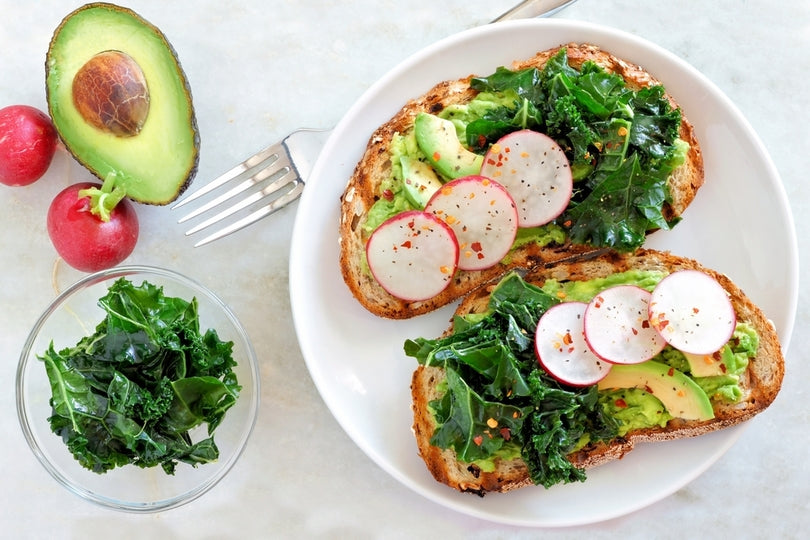A Guide To Popular Health & Fitness Terms


Have you just started a new workout routine and are unsure of some of the words and phrases you’re encountering?
If you want to make the most of your warm ups, workouts and recovery sessions, it helps to have a clear understanding of these expressions.
To help you exercise with confidence, I have put together a list of must-know health and fitness terms that will take you through every stage of your program!
Find out:
Don’t be intimidated by what you don’t know — yet!
Everyone has been a beginner at some point, and that’s nothing to be ashamed of!
Even if you’ve been training for a while, or you’re returning to exercise after a break, health and fitness is a journey, and there is always the potential to learn something new!
This list can help you brush up on health and fitness terms to ensure you’re interpreting them correctly.
Gym terminology you should know
These are the must-know terms that you might hear while you’re at the gym — and what they actually mean.
Rep
“Rep” is simply an abbreviation of repetition. Reps define the number of times you perform an exercise. For example, if you do 15 push-ups then stop, that is considered 15 reps. Super easy to remember!
Set
A set goes hand in hand with a rep. Sets refer to the number of times you will repeat your desired reps. For example, if you do 15 push-ups then have a rest, and complete another 15 push-ups followed by a rest, and a further 15, then you have completed 3 sets.
‘Engage your core’
Also known as: Activate your core, brace your core
This is a really common phrase that you’ve probably come across already.
It basically means contracting your abdominal muscles in a way that helps to support your body (especially your lower back) during movement or an abs workout. To do this, think about drawing up through your pelvic floor muscles (like you’re stopping yourself from going to the bathroom) and drawing your belly button in towards your spine.
While holding this position, exhale like you are blowing up a balloon. This will kick your deep abdominal muscles into gear and "engage your core".
Engaging your core is also important for stability, which you rely on to hold a position steady!
‘Knees in line with toes’
Also known as: Knees out
This phrase probably makes you think of one key exercise: squats! With good reason, because squats are a common exercise performed incorrectly, which means you may not be getting the most out of them. “Keep your knees in line with toes” means being mindful that your knees are tracking directly over your toes at all times. In other words, your knees aren’t falling in, or going too far forward over your toes, as you squat down.
‘Spine in a neutral position’
Also known as: Keep your back straight
You’ve probably come across this one if you’re following any of my High Intensity programs! When I refer to your spine being in a neutral position, this actually means allowing your spine to follow its natural curvature. Your core should still be engaged, and your pelvis “tucked” (so that your bottom isn’t sticking out) and your back should NOT be arched excessively.
‘Shoulder blades back’
Also known as: Keep your chest up
I regularly make my posture a focus during the day or while I’m working out because good posture is important for mobility and general health!
Activities that we do regularly, such as sitting at a desk or watching TV, can make it really easy to slump our shoulders, something that can negatively affect our bodies.
When you’re doing exercises that target your back and shoulders, you should be drawing your shoulder blades back (you might like to imagine that you’re sliding your shoulder blades down, as though you’re tucking them into the back of your pants!). This helps you to strengthen the surrounding muscles, which can help improve your posture over time.

‘Soft knees’
Also known as: Staying light on your feet
If you’ve done any of my workouts, I’m sure you’ve come across this phrase! Maintaining soft knees means distributing your body weight over your foot slowly (rather than stomping) by landing on your toes first, and also by allowing your knees to bend gently as your feet reach the ground.
This is really important for high-impact exercises because it can reduce the amount of impact on your joints.
Fitness terminology you should know
Fitness terms are always evolving!
As new training styles are developed and more research emerges in this field, new phrases and terminology start to become commonly used.
They can be easily misunderstood, so here are some commonly-used fitness terms and their definitions.
DOMS
If you ever hear the word “DOMS”, it’s actually an acronym for delayed onset muscle soreness.
It’s a common condition for anyone new to exercise or if you are trying a new training program that sees you working different muscle groups.
You may have DOMS if:
- Your muscles are sore to touch
- Your body feels stiff and you have less mobility
- You feel like your muscles have less strength
If you experience this kind of muscular soreness, it might help to know that it’s actually an indication that your muscles are adapting to your new exercise program.

Spot reduction
I get questions about this term SO often, and it’s something that many women are curious about.
Spot reduction is based on the idea of losing fat from specific areas of the body. Workouts that promise a loss of belly fat, or smaller thighs are aimed at people who would like to spot reduce.
However, spot reduction is actually a myth because it isn’t possible to target fat loss from just one part of the body, and the way women lose fat can be determined by a combination of factors, including your stage of life and genetics.
LISS
If you have completed any of my programs, you may be familiar with this term.
If you haven’t heard the term yet, or are wondering what it means, LISS stands for Low-Intensity Steady State and is exactly what it sounds like.
LISS is exercise at a low but consistent intensity over a period of time. Some great examples of LISS are walking, cycling or swimming.
HIIT
My training programs High Intensity with Kayla and High Intensity Strength with Kayla (formerly BBG and BBG Stronger) recommend HIIT — which stands for high-intensity interval training.
This is basically the opposite of LISS in the sense that instead of training at a low intensity, you give your absolute maximum amount of effort for a certain period of time.
If you're wondering how long a HIIT workout should be, the answer is: not long at all. An example of a HIIT workout is sprinting as fast as you can for 30 seconds, followed by 30 seconds of rest and repeating these intervals for 10-15 minutes.
HIIT is a really effective training style because it encourages the “afterburn” effect, which essentially means your body’s metabolism stays elevated even after you have finished exercising.
It also has a range of other benefits, and improves your body’s utilisation of oxygen.
Interval training
If you’re interval training, you are alternating between bursts of intense activity and bursts of lighter activity.
For example, if you were to do a 60-minute yoga class, it generally isn’t counted as interval training because you are maintaining a similar intensity (or effort) during the entire class.
On the opposite end of the spectrum, an interval workout could have you walking for 1 minute followed by a 1-minute sprint. It could also involve completing 15 burpees followed by 30 regular squats.
It’s a training style with a range of benefits, and may help you to burn more calories in a shorter amount of time as well as improve your fitness levels.

Circuit training
My programs are based on the principles of circuit training.
It means that you do a particular exercise for a certain number of reps or amount of time before moving on to the next exercise.
Unlike traditional weight training, circuit training is not necessarily based on how many reps you can do in total, but more so how many reps you can do in a certain amount of time.
My workouts in the Sweat app are 28 minutes long, and you alternate between four 7 minute circuits.
Each of these circuits is comprised of four exercises.
Circuit training is an intense form of exercise that can help boost your fitness. If you want to work out at home, circuit training can be done with little to no equipment.
Plyometric training
Plyometric training, or “plyo”, is another style of training used in my High Intensity programs.
If you’re doing plyometrics, or “jump training”, you are stretching a muscle (or group of muscles), which is then followed by a rapid contraction.
This combination of stretching and contracting helps to increase both power and speed, and can easily be done using your bodyweight as resistance.
Some examples of plyo exercises are jump squats, jump lunges, and burpees.
Rehabilitation
I’ve often shared the importance of rest days, but I often get asked if rest is the same as rehabilitation.
They’re actually two separate concepts.
Unlike rest which is passive, rehabilitation (or “rehab”) is a form of active recovery, and includes stretching after a workout.
Rehabilitation can help you to recover more quickly from workouts and perform better when you’re training!
Self-myofascial release
Some common forms of rehab can include stretching, massage and “self-myofascial release”, which most people know as foam rolling.
This is a great way to reduce muscle tightness in your body — with the help of a foam roller.
It’s similar to a massage, only you are able to control the pressure, and spend additional time on areas that you feel need a little more work!
It might make you feel good, but foam rolling has other benefits too! It may increase your range of motion, speed up recovery time and improve blood flow to your muscles.
Nutrition terminology you should know
There are trends in nutrition and healthy eating emerging all the time, and it can be hard to keep up with the new terminology!
If you’re curious about what they mean, these are some popular nutrition terms and their definitions.
Low GI
GI (glycemic index) is a ranking given to food to describe how quickly the carbohydrate in that food is broken down and absorbed into the bloodstream.
The GI index ranges from 0 to 100 and a lower number represents a lower GI.
Lower GI foods are broken down and absorbed relatively slowly, which means that blood sugars rise relatively slowly too. Low GI foods may provide you with more sustained energy.
If a food has a higher GI, it is generally broken down and absorbed quickly, which can produce a rapid spike in blood sugar levels followed by a rapid decline.
However, it is important to remember that GI values are based on eating particular foods alone, which does not always reflect how they are actually eaten in real life.
For example, some varieties of rice are a moderate to high GI food, however, most people don’t actually just eat a big bowl of rice for dinner! Rice is normally eaten with other foods, such as vegetables or protein, which can affect how quickly your body processes the carbohydrate.
Unrefined carbohydrates, such as wholegrain bread and pasta, quinoa, and brown rice are a great option as these foods generally release energy more slowly than highly processed carbohydrates. They can also provide your body with more nutrients, particularly fibre.

Macros
The term “macros” is short for macronutrients.
They’re nutrients that our bodies need in LARGE amounts every day. The three main macros are carbohydrates, protein and fats.
We all need these every day because they provide our bodies with energy and are essential for sustaining good health and functioning at our best.
For example, proteins provide us with amino acids, which help form muscles and a number of other tissues.
Because different foods provide different macronutrients, it is important that we eat foods from all of the main food groups to make sure that we are getting enough of each. For example:
- The main sources of carbohydrates are grains, fruits and vegetables
- The main sources of protein include lean meat, legumes, and dairy
- The main sources of healthy fats include nuts, seeds and unrefined oils
If you hear someone say that they’re “counting macros”, they are eating a particular balance of foods to receive a certain percentage of daily energy from each macronutrient.
For example, they could be getting 20% of energy from fat, 45% from carbohydrates, and 35% from protein.
While I don’t eat this way — I eat Mediterranean-style foods — some people find counting macros a helpful way to help people achieve their health and fitness goals.

Micros
The term “micros” is short for micronutrients.
These nutrients are needed by the body in small amounts — but this doesn’t mean that they aren’t important!
The two main types of micros are vitamins and minerals.
Some of the more common ones include:
- Vitamin B can help our bodies convert our food into energy
- Vitamin C can help to strengthen our immune system and fight free-radicals
- Iron can help to deliver oxygen to all of our body’s cells
- Calcium can help keep our bones and teeth strong.
Each vitamin or mineral has a different role in the body and we need them all in different amounts.
To make sure that you’re getting enough of these, it is important that you eat a well-balanced diet that includes a wide variety of fruits and vegetables.
Essential nutrients and non-essential nutrients
When it comes to both macros and micros, you’ll often hear the terms “essential” or “non-essential” being thrown around as well.
Some nutrients can be a little harder to get than others. That’s because your body is able to produce some nutrients on its own — these are non-essential nutrients.
Others can’t be produced by the body and must be consumed through eating food — these are called essential nutrients.
Supplement
A “supplement” is essentially anything that can be used to help improve your diet.
This can range from things such as multivitamins to herbs or protein powder. If you eat a well-balanced diet, then it can be much easier to get enough of all of these essential nutrients without having to rely on supplements — and I personally don’t use supplements.
However, there may be some cases where you need to use supplements because your body is lacking in certain nutrients, and can’t get these through food alone. I always think it is best to consult your doctor before adding any extra supplements to your diet.

‘Pescetarian’ and ‘flexitarian'
Most of us would have an understanding of what it means to follow a vegetarian or vegan diet, but I often get questions asking what a “pescetarian” diet is.
“Pesce” means fish, and a pescetarian is someone who follows a vegetarian diet, but also includes fish. This could also be called “semi-vegetarian”.
Another word for it is “flexitarian” — people who eat a mostly vegetarian diet but occasionally eat meat or fish.
However, people following a pescetarian type of diet will not eat red meat or poultry but may choose to eat other animal products, such as eggs, milk and cheese.
Paleo
“Paleo” is short for Paleolithic, which is an ancient historical period — also known as the Old Stone Age — when people had to hunt and gather their food.
The “paleo” or “caveman” diet has become a hot topic in nutrition, with as many devotees as detractors.
The diet requires followers to eat whole foods, such as lean meats, fresh fruits and vegetables, nuts and seeds and avoid foods such as grains, dairy, legumes and beans.
Nice cream
Nice cream is an ice cream-style dessert, usually made from frozen banana or other fruit.
It’s really simple to make, as it only requires you to blend the fruit until it has a consistency that is similar to ice cream.
It’s suitable for vegans and is a nutritious alternative to ice cream for dessert or as an easy healthy snack.

Meal prep
“Meal prep” is short for meal preparation.
If you’re unfamiliar with the term, it refers to the process of planning and preparing meals for a set period of time — it could be a week or a month.
One method of meal prep is cooking large batches of dishes in advance so you can portion them out into containers with servings that will be eaten over that period.
Depending on your lifestyle, you could divide it into containers with individual serves, a meal for two, or family-sized portions. Meal prep serves can be refrigerated or frozen for future use.
Another form of meal prep is cooking and preparing different ingredients — vegetables, protein and carbohydrates — that you can mix and match into a variety of different meals over the course of a week.
Meal prep can be done for any meal — breakfast, lunch or dinner — as well as for snacks and smoothies.
Many people find meal prep an effective way to stick to health and fitness goals and save time preparing food!
Knowledge is power!
Knowing what these commonly-used gym and fitness terms actually mean can really help you get the most out of your workouts.
Having a better understanding of nutrition terminology can help you feel more confident and empowered to stick with your health and fitness goals.
There are also new phrases, trends and terminology being used all the time. If there’s a term you’re unfamiliar with that I haven’t covered, please let me know in the comments below!
* Disclaimer: This blog post is not intended to replace the advice of a medical professional. The above information should not be used to diagnose, treat, or prevent any disease or medical condition. Please consult your doctor before making any changes to your diet, sleep methods, daily activity, or fitness routine. Sweat assumes no responsibility for any personal injury or damage sustained by any recommendations, opinions, or advice given in this article.




<#= c.user.username #><#= moment(c.created_at * 1000).fromNow() #>
<#= c.html_body #> <# if (c.images) { #>
<# } #>